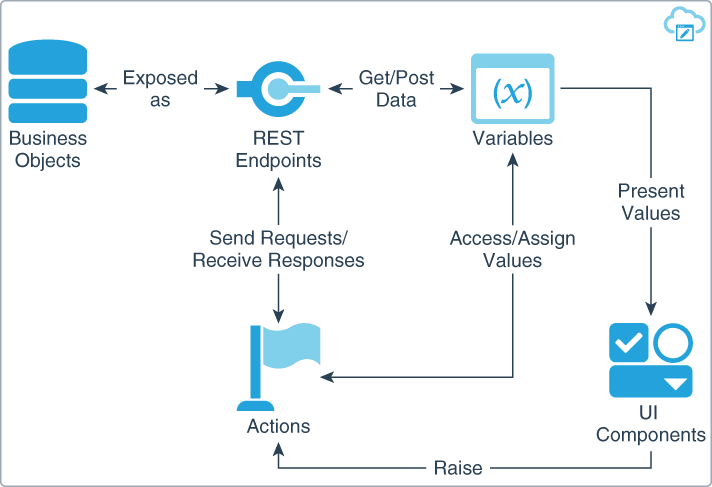3 Anatomy of Visual Applications
To develop applications with Oracle Visual Builder, you need to understand a few basic concepts.
The basic components of a visual application are web apps, services, business objects, and sometimes processes. The basic building blocks of an app are user interface (UI) components, variables, action chains, page flows and page navigation, and data access through REST endpoints.
The building blocks and their interactions can be summarized as follows:
- Variables are the mechanism used to store and manage client state. Every variable has a type and a scope.
- An action chain is composed of a set of one or more individual actions. The action chain is triggered by an event. (For example, a button click can trigger navigation to a page.) Each action represents a single asynchronous unit of work. An action chain can define input parameters and local variables that are available only in the context of that action chain, and can also access application-scoped input parameters and variables.
- Page flows and page navigation govern the transmission of information from one page to another. Each individual page has a lifecycle, as does an application. Each lifecycle event (entry or exit from a page, for example) can provide a trigger for an action chain.
- A UI component encapsulates a unit of user interface through a defined contract, specifically, the Oracle JavaScript Extension Toolkit (JET) component contract. Component attributes are bound to variables, and component events and variable changes trigger action chains.
- All data access is based on REST. This data can come from business objects and service connections. Actions and variables control how data is sent to and from a REST endpoint in an app. A developer can create a type that matches the REST payload and pass the data using a variable of that type.
The following figure shows the interactions among these building blocks.

Description of the illustration bb-interactions.png